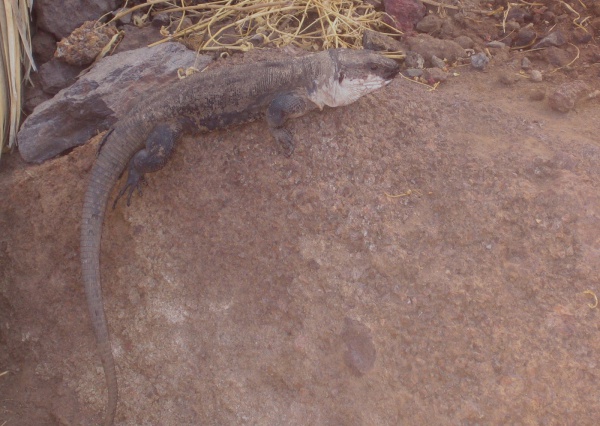Facts About La Gomera giant lizard
The La Gomera giant lizard is a captivating species native to the Canary Island of La Gomera. These lizards are easily identified by their striking white necks, chests, and mouths, which are in stark contrast to their dark brown backs. As diurnal herbivores, they can grow up to half a meter in length and typically lay a single clutch of eggs annually.
Since their rediscovery by Spanish biologists in 1999, after having been presumed extinct, the La Gomera giant lizard has shown a slow but steady recovery. Currently, approximately 90 individuals are found in the wild, with an additional 44 in captivity. These lizards are predominantly confined to two cliffs in Valle Gran Rey on La Gomera. Despite conservation efforts, their survival remains threatened by predators such as feral cats and natural hazards like rockfalls.
Classified as critically endangered, the La Gomera giant lizard has suffered significant declines due to overgrazing, hunting, and predation. Ongoing conservation efforts include a captive breeding program and initiatives to control feral cat populations.
Initially described from subfossil remains and believed to be a subspecies of Gallotia simonyi, the La Gomera giant lizard has since been reclassified as its own species, Gallotia bravoana, or Gallotia gomerana. Although there is still some debate regarding its exact taxonomic status, it is generally considered closely related to Gallotia simonyi.

 Portugal
Portugal